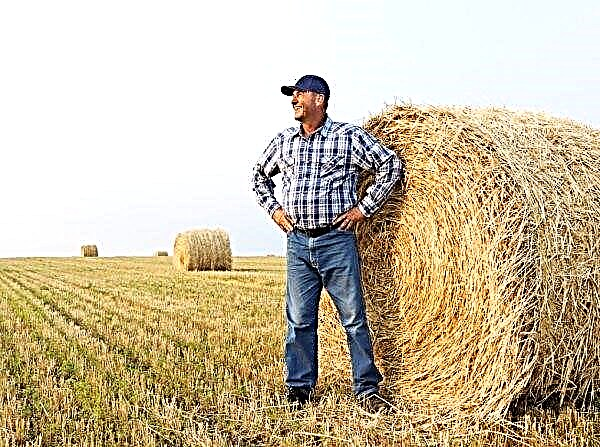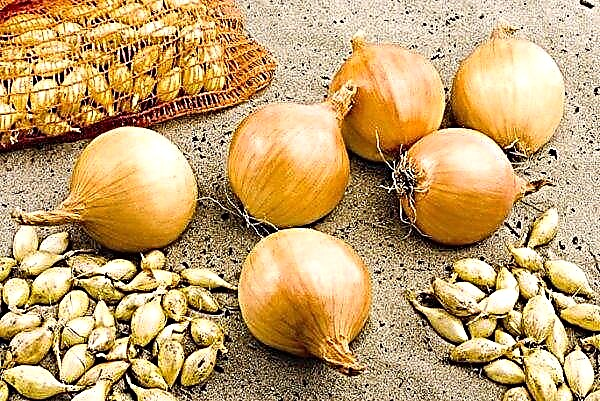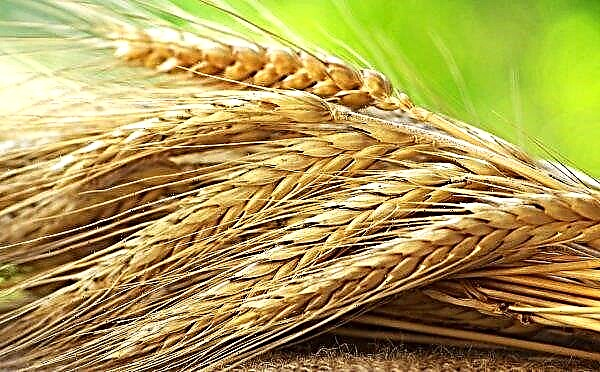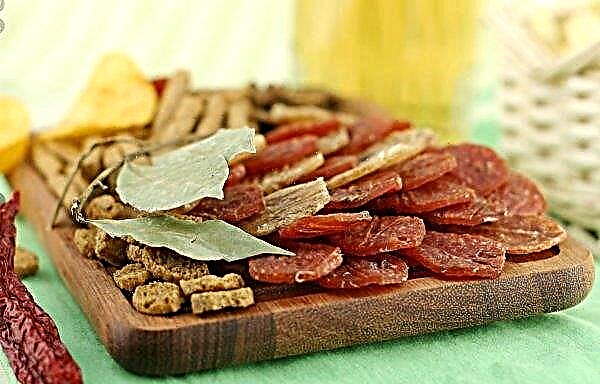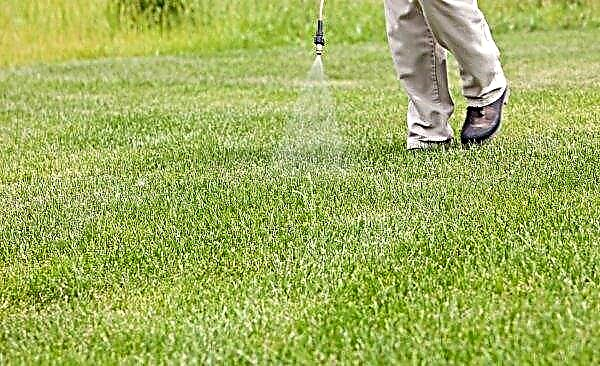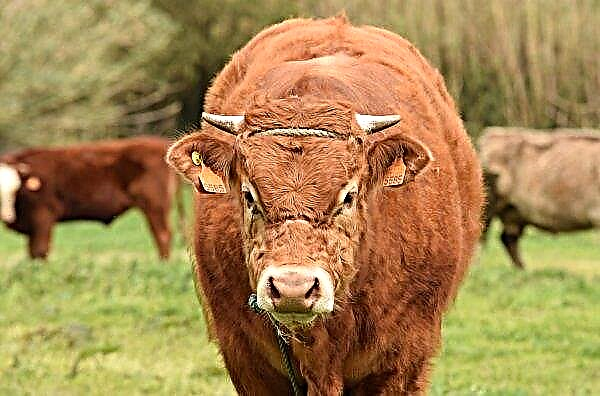Among the huge number of chicken breeds that exist in the world, there are not so many that, after breeding, not only quickly gain popularity, but also retain it for a long time. These are precisely the hens of the Pushkin breed, which will be discussed in the article.
Origin history
To breed this breed of hens began in the third quarter of the last century, but officially it was recognized only in 2007. As a parental basis for the new chicken meat and egg directions for personal farmsteads were used:
- Leghorn
- Moscow whites;
- Australorps;
- Cross Broiler-6.
Did you know? The number of domestic chickens on our planet is three times the entire population of the Earth.
Work on the breeding of a new breed was carried out simultaneously at two breeding stations in Sergiev Posad, Moscow Region, and in Pushkino, Leningrad Region, whose name the breed received. The breeders' ultimate goal was to raise poultry with high egg productivity and at the same time with a decent slaughter yield of meat. The result was a wonderful chicken breed, listed today among the most popular on personal rural farmsteads of Russia.
Breed description
Although in general the chickens of this breed of the Moscow and St. Petersburg lines are very similar, there are still some differences between them. For example, in the birds of the St. Petersburg line there is a ridge in the form of a rose, while the Sergiev Posad have a leaf-like ridge. St. Petersburg layers are able to lay up to 230 eggs with an average egg weight of 60 g during the year, while having a carcass weighing up to 2 kg. Roosters weigh up to 3 kg, and their tender meat has a great taste.
The Moscow line is characterized by the same weight categories, but their egg production is lower, amounting to 200 eggs per year. In addition to ridges, the birds of these two lines also differ in the color of plumage, which is more colorful among Muscovites, especially roosters. If, after hatching, a large black spot is observed on the head of a Moscow chicken, then this is a cockerel. Chickens have no such speck at all, or it is very small. Representatives of the St. Petersburg line have no such features.
Appearance
In general, the external characteristics of representatives of both lines of the Pushkin breed are similar. You can judge the appearance of these birds by the following table:
| Appearance | Characteristic |
| Head | Elongated, small |
| Crest | Leafy or pinky |
| Beak | Ivory hue, medium length, with a curved tip |
| Neck | Tall, surrounded by a feather mane |
| Chest | Voluminous |
| Eyes | Convex, Orange |
| Wings | Short length, slightly deflated |
| Tail | Vertically planted |
| Legs | High |
| Plumage and color | Dense, black-and-white motley or striped-motley color in hens and white in roosters |
Temperament
This breed belongs to one of the most tame in relation to a person from whom hens, as a rule, do not shy away and willingly come in contact with him. They have a peaceful, highly balanced character. In case of danger, they do not fuss frantically, like most other chickens, but cling to the ground and freeze in this position. At the same time, they are very quick-witted and almost immediately understand what the owner requires of them. The complaisant nature and tolerance to humans, coupled with high egg and meat productivity, made birds of this breed so popular in homestead farms.
At the same time, they are very quick-witted and almost immediately understand what the owner requires of them. The complaisant nature and tolerance to humans, coupled with high egg and meat productivity, made birds of this breed so popular in homestead farms.
Did you know? The color of the eggshell in no way corresponds to the quality characteristics of the inside of the egg.
Advantages and disadvantages
In addition to the foregoing, the advantages of chickens of this breed include:
- unpretentiousness in the content;
- endurance, resistance to low temperatures;
- undemanding to the diet;
- resistance to various diseases;
- rapid maturation of chickens;
- their good survival;
- strong immunity;
- fitness for maintenance in open-air cages;
- good presentation of poultry meat carcasses.
Video: Pushkin breed of chickens
Content Features
Not differing in exactingness to the conditions of their maintenance, these hens nevertheless need human attention to themselves. For example, for them there is no need to heat the chicken coop, but it is necessary to warm it well.
Suitable conditions
Since it is believed that hens of this breed do not like to fly, they often practice keeping the chicken coop on the floor so that they do not bother to take off perches. However, practice often refutes these theoretical conclusions, since the Pushkin birds feel great on perches and are not too lazy to fly to an 80-centimeter height.
Chicken coop requirements
The chicken coop should be well insulated. Particular attention should be paid to the delicate balance between good ventilation and the absence of drafts that chickens are afraid of. Avoid humidity in the poultry room as well. The chicken coop should be covered with a 10-centimeter layer of straw. Less often, sawdust is used for this purpose, since chickens have a passion for digging out any loose fractions, as a result of which the chicken coop floor covered with sawdust quickly becomes like a battlefield pitted with shells. Perches are made at the rate of a quarter meter for each individual, but in winter, when the hens sit for mutual heating, they are closely pressed against each other, these distances no longer matter. An important element in the chicken coop is the nests into which the hens lay their eggs. For this purpose, any containers measuring 40x60 cm in the form of wooden boxes, baskets, basins are suitable.
Perches are made at the rate of a quarter meter for each individual, but in winter, when the hens sit for mutual heating, they are closely pressed against each other, these distances no longer matter. An important element in the chicken coop is the nests into which the hens lay their eggs. For this purpose, any containers measuring 40x60 cm in the form of wooden boxes, baskets, basins are suitable.
Important! The main conditions for placing nests in the chicken coop is their shading, because the hens will not lay eggs where direct light falls, although in complete darkness the hens also do not rush.
A special temperature regime is required when keeping chickens. Even in a warm room, they need additional heating. Freshly hatched chickens need a temperature of at least 30 degrees, and only after 5 days it can be reduced to 28 degrees, and then weekly reduced by another 3 degrees. Upon reaching the age of one month, the chickens are already quite adaptable to a temperature of 18 degrees.
Walking yard
Being a poor flyer and a fairly lazy pedestrian, the Pushkin bird may well be kept in open enclosures. The only condition for this is the presence of a canopy that rescues birds from rain and the burning rays of the sun. It is good if the walking yard is planted with grass crops in the form of clover and nettle, which in spring can become a valuable source of nutrients for chickens.
Feeding troughs and drinking bowls
There are two main requirements for bird feeders:
- unimpeded access to food should be available for each individual living in the chicken coop;
- the bird should be limited as much as possible to climb into the feed with legs.
However, at present, practically many rural farmsteads, not to mention poultry farms, are equipped with automatic drinkers, which are inexpensive, easy to manufacture with their own hands and at the same time provide the bird with clean water in an automatic mode, avoiding its pollution. The most popular and functional nipple drinkers, which give the required portion of water after pressing the beak on the nipple stem.
Feeding
The optimal feeding regime for chickens is four meals a day.
Important! In violation of this regime, there is a danger of either overeating in birds in the mornings and evenings, or, conversely, malnutrition during the day.
At the same time, the feed should be balanced by:
- proteins, which are the building material for body cells and found in soybean, canola, legumes, sunflower meal, bone and fish meal, earthworms;
- fats that create an energy reserve in the body of a bird and are in oats and corn;
- carbohydrates, which serves as a source of energy and extracted from succulent fodders in the form of potatoes, pumpkins, carrots, fodder beets;
- fiber, necessary for normal digestion and contained mostly in the grain shell;
- minerals, which are the building material for the chicken skeleton and eggshell, which enter the body of the bird along with shells, chalk, wood ash and lime;
- vitamins, which are substances that are essential for the normal functioning of the body and contained in green feed, silage, fish oil, flour from pine needles.

Adults
Based on these requirements, the poultry diet is composed of:
- grain mixture;
- various herbs;
- fresh hay;
- compound feed;
- root crops;
- bran;
- waste from meat processing,
- waste from fish processing,
- milk products
- vitamin and mineral premixes.
Chickens
Chickens of this chicken breed are characterized by high vitality, however, at first, after birth, they require increased attention to their diet. The first 3 days with an interval of 2 hours they are fed with boiled and grated eggs with chopped corn grits. After this, the feeding diet expands:
- cottage cheese;
- greens;
- crushed wheat;
- millet;
- barley;
- wheat bran
- barley and oatmeal.
 After 10 days, add chicken cake from sunflower to the menu of chickens, and also enrich it with a minced meat grinder:
After 10 days, add chicken cake from sunflower to the menu of chickens, and also enrich it with a minced meat grinder:- onions;
- carrots;
- dandelion leaves;
- nettles.
Shedding and egg laying break
During molting, which is a natural process inherent in all chickens, birds not only lose their attractive appearance, but also reduce their egg production. However, a month later, after a little after that, Pushkin chickens completely restore their original conditions. And to help chickens to overcome this period most quickly and painlessly, it is useful to feed them with fish or meat broth, as well as give food with a high fat content.
Reproduction and offspring
As already mentioned, the chickens of the Pushkin breed are almost completely devoid of maternal instinct, which is expressed in their unwillingness to hatch chickens. Sometimes there are rare exceptions that only confirm the general rule: Pushkin chickens are bad mothers. But the roosters of this breed are enviable active in the matter of procreation, fertilizing up to 95% of eggs laid by their friends. One cock of the Pushkin breed is enough for 20, or even 25 hens, while males of other chicken breeds are able to “serve” only five females. For this reason, chickens from fertilized eggs of the Pushkin breed are most often hatched using an incubator. On rural farmsteads, they are sometimes planted in nests of layers of other breeds.
One cock of the Pushkin breed is enough for 20, or even 25 hens, while males of other chicken breeds are able to “serve” only five females. For this reason, chickens from fertilized eggs of the Pushkin breed are most often hatched using an incubator. On rural farmsteads, they are sometimes planted in nests of layers of other breeds.
Possible diseases
Although the chickens of the Pushkin breed, having strong immunity, are very resistant to colds and infectious diseases, they are nevertheless sometimes able to get sick:
- salmonellosis, to which chickens are more often subjected and the 20-day treatment from which consists in adding a tablet of Furazolidone dissolved in 3 liters of water to the bird's drinker;
- pullorosis, which is also called typhoid and is treated with antibiotics in the form of Neomycin or Biomycin;
- pasteurellosis, or bird cholera, which is treated with sulfa drugs in the form of sulfamethazine, added to poultry feed at the rate of 0.5% of the feed volume;
- infectious bronchitiswhich is treated by spraying with chloroskipidar;
- mycoplasmosis, which is fought with antibiotics in the form of chlortetracycline and oxytetracycline, added over 7 days to poultry feed in the amount of 0.4 g of the drug per kilogram of feed.
 This wonderful breed of chickens is gaining more and more admirers in personal households due to its high productive qualities, and its peace-loving and human-friendly character.
This wonderful breed of chickens is gaining more and more admirers in personal households due to its high productive qualities, and its peace-loving and human-friendly character.

